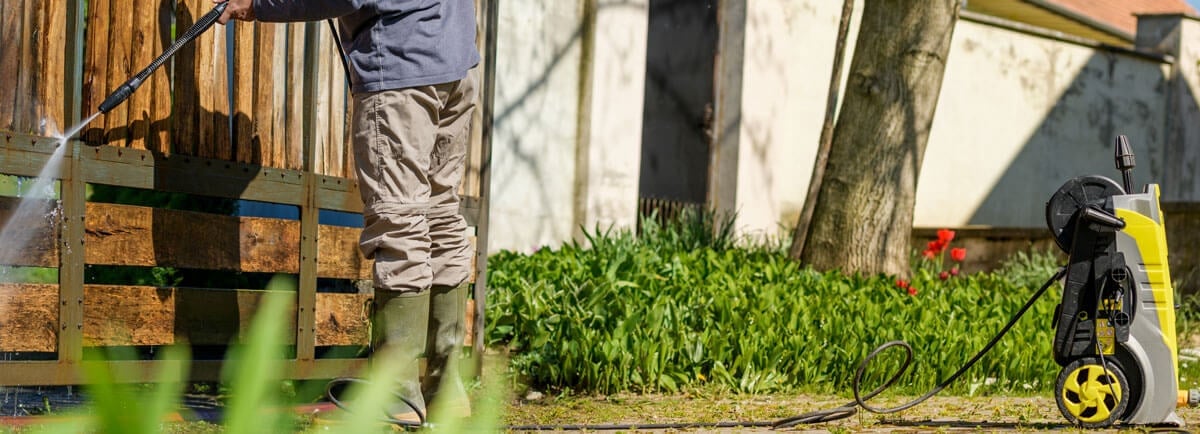A comprehensive guide to all maintenance and servicing operations for all pressure washer models.
A comprehensive guide on all maintenance operations for pressure washers, with lots of useful tips and information on all the steps to follow.
Pressure washers have become increasingly popular and important in the maintenance and cleaning of outdoor areas as well as various garden equipment such as chairs or tables, even cars or bicycles.
Many models are available on the market and are now capable of adapting to all kinds of needs.
But once you have purchased a pressure washer, what maintenance does it require?
How can it best be stored if it is not used for a long time?
In this guide we will take a complete overview of the different stages of maintenance, the different operations to be carried out and their correct procedure.
CONTENTS
The maintenance steps of the pressure washer
To begin with, maintenance of a pressure washer can be summed up in three main steps:
- Frequent maintenance: All the various maintenance work that needs to be carried out on a regular basis;
- Occasional maintenance: All the different maintenance work that needs to be performed from time to time;
- Storage: All the necessary maintenance work that needs to be carried out before a long machine standstill.

1. Frequent maintenance
n this first chapter, we discuss all the various maintenance tasks to be carried out frequently on the pressure washer.
We can resume them in:
- Checking the water inlet filter;
- Cleaning the nozzles;
- Draining the internal water circuit at the end of each work.
- Checking the integrity of all components.
1.1 Checking the water inlet filter
Once the different components have been checked, the water inlet filter must be checked and, if necessary, cleaned. If the pressure washer is correctly stored in a sheltered place and protected with a tarpaulin, it only needs to be checked.
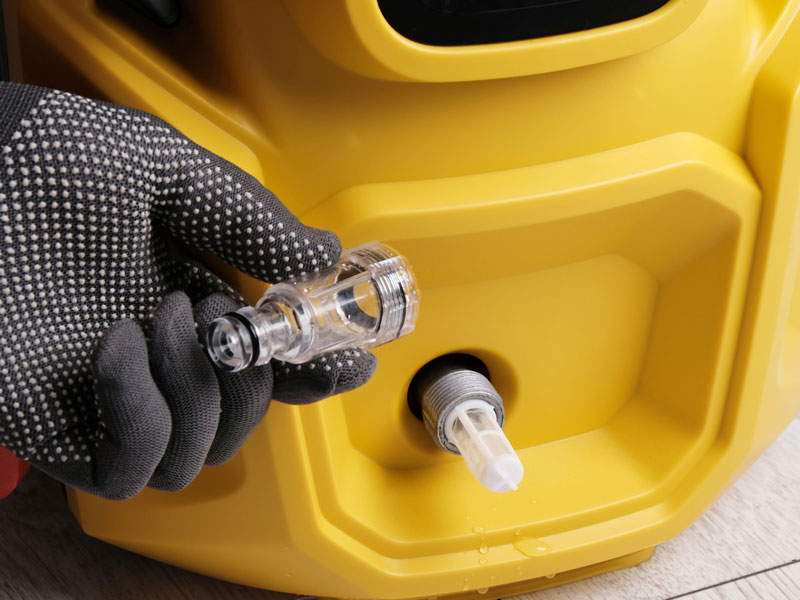
On the other hand, if the machine is left exposed to dust and dirt, it will surely need to be cleaned.
The inlet filter is designed to block impurities before they enter the pressure washer circuit.
If the filter is damaged or clogged, the water cannot flow properly, causing the machine to lose pressure.
Worst case scenarios could even result in impurities and residues reaching the pump, causing serious and costly damage.
That is why it is important to clean the inlet filter, even before each use, all the more so if the pressure washer is just after a long standstill.
The filter is usually located near the junction where the water hose connects to the pressure washer, its position is also always specified in the manual.
Tip: Better still, clean the inlet filter after each use of the machine, this will ensure that the filter is always at its optimum.
How to clean the pressure washer’s water inlet filter?
- Loosen the fitting and remove the filter gently;
- To clean it properly, it must be washed with running water and a soft brush to remove impurities.
If, hoverer, damage or obvious signs of wear are evident, it is better to replace it. - Finally, refit the filter and tighten the fitting accordingly.
1.2 Cleaning the nozzles
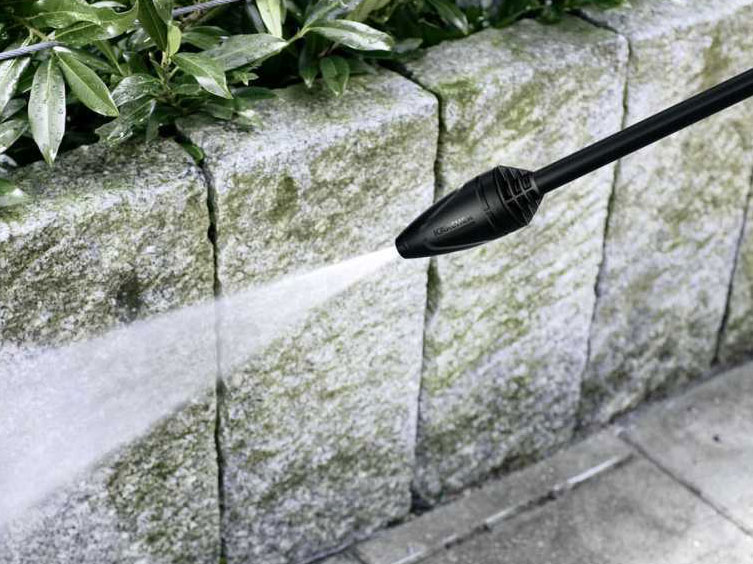
The nozzles are the final part of the pressure washer, from which pressurised water flows out.
When the machine is used frequently, it is possible that the nozzles may become clogged due to limescale or other impurities in the water. This can cause the pressure to drop, resulting in less effective washing.
For this very reason, many models come with a cleaning tool such as a metal pin or brush, specifically designed to remove possible obstructions.
This is an operation that must be carried out regularly, at the very least a check to ensure their cleanliness, in order to avoid breakdowns or inefficient operation of the machine.
To clean the filter, simply use water and anti-limescale detergent, while the nozzles can be cleaned with the supplied pins.
1.3 Draining the hydraulic circuit
At the end of each working session, the internal water circuit of the machine must be emptied as well.
How is it done?
- First, the pressure washer’s supply hose must be disconnected;
- The machine should then be switched on for about 10–1515 seconds (avoid a longer time frame to prevent damage caused by overheating).
This allows any residual water to leak out of the gun, preventing limescale build-up, which is the primary cause of damage and seal failures.
1.4 Checking components
It is also recommended to regularly check the integrity of the various components of the pressure washer: gun, lance, hose and various fittings.
This way, faults or damaged parts can be spotted immediately.
1.5 Frequent maintenance (for petrol models)
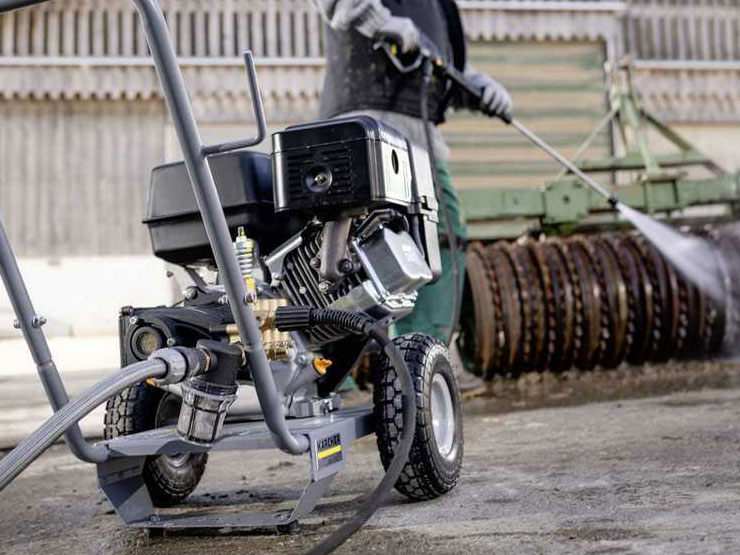
In the case of servicing a petrol-powered pressure washer model, there are a few extra precautions to be taken, related precisely to the fact that the petrol engine and its components are more prone to wear and maintenance.
Among the most common and important interventions for this category of pressure washers are:
- Checking the engine oil;
- Checking the air filter.
1.5.1 Checking the engine oil level
The engine oil level must be checked regularly to ensure proper engine operation.
The frequency for topping up and the type of oil required are specified in the manufacturer’s manual.
Some models are equipped with an oil sensor that prevents the engine not to start should the oil level be too low.
The engine oil level must be kept between the minimum and maximum markings on the machine.
Too low or too high a level would cause serious damage to the engine.
1.5.2 Checking the air filter
Equally to the engine oil level check, the air filter is to be checked for dirt and wear.
A good air filter allows the engine to run properly and therefore ensures good performance of the machine.
If we find a filter in good condition and only dirty, we can clean it, even with a jet of compressed air, to remove dust and other residues.
If, on the other hand, it shows damage or obvious signs of wear, it must be replaced.
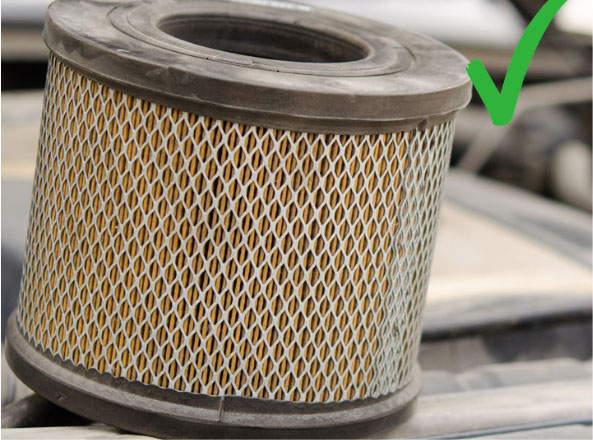

2. Occasional maintenance
Occasional maintenance work refers to work that does not need to be carried out frequently, but to control operations to be carried out during the machine’s working period.

We can sum up occasional maintenance work as follows:
- Checking for water leaks;
- Checking the water pipe for possible algae growth.
2.1 Checking for water leaks
Water leaks may go unnoticed, but besides reducing the efficiency of the machine, they can also be a sign of damage to internal components.
As a first step after standstill, therefore, it must be checked that there are no water leaks or small puddles near the machine.
What can cause a water leak?
The reasons can be diverse, from worn seals, loose or damaged fittings to cracks in the hoses.
This is precisely why it is wise to inspect pressure hoses and nozzles for leaks, cuts or holes so that they can be replaced if necessary.
If the cause of a water leak is none of the above, there is most likely damage to the pump.
2.2 Checking the water pipe for possible algae growth
After a period of machine standstill, one must pay attention to the formation of algae inside the feed water pipe.
If it is left unused for a long period, such as winter storage, with a small amount of water in the pipe, there is a real possibility that algae may have formed inside it.
Using the pressure washer with algae in it would then lead to these ending up directly on the machine’s pump, seriously damaging it.
2.3 Occasional maintenance (for petrol models)
Even for less frequent maintenance, in the case of a petrol-powered pressure washer, there are additional tasks to be performed to ensure the proper functioning of its various components.
2.3.1 Engine oil change
Using dirty or excessively deteriorated oil can lead to increased friction, overheating and, in the long run, damage to the pump itself.
This is why it is very important to change the oil in a timely manner.
It is recommended to change the oil about every 50 operating hours.
How to change the oil in the pressure washer?
Pressure washers have a drain plug, usually at the bottom, which must be unscrewed to let the used oil drain out, making sure to have a suitable container where it can be stored and later disposed of.
2.3.2 Checking the spark plug
The spark plug is one of the longest-lasting and most durable components of the internal combustion engine, and it is not necessary to check its condition very often, except if one notices starting problems or sudden drops in power.
The spark plug actually creates the spark that starts the engine, and if it is dirty or damaged, it could lead to power loss or failure to start.
When should the spark plug of a pressure washer be checked?
The state of the spark plug should be checked especially after a long period of standstill such as winter storage, if starting problems occur, and after many working hours.
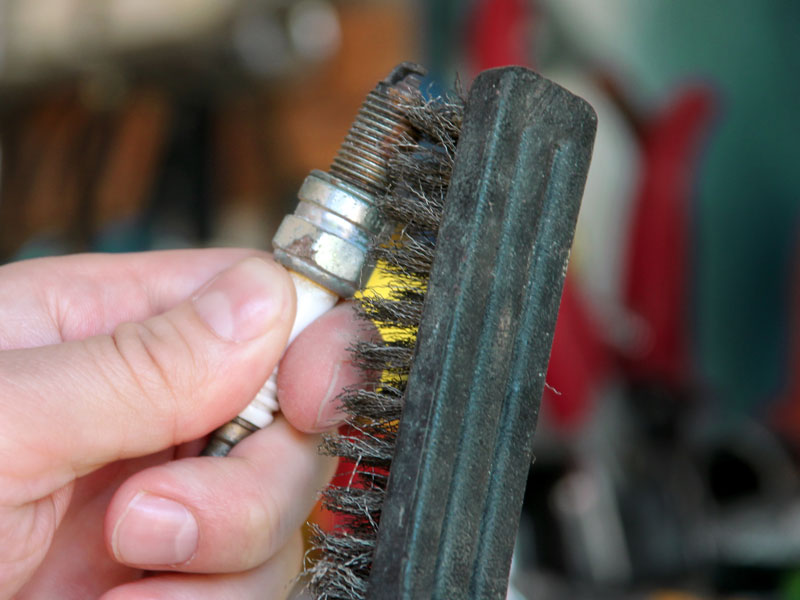
During its inspection, therefore, we can be faced with two scenarios:
- One may find a dirty or slightly encrusted spark plug, but still in good condition.
In this case, simply clean it by brushing it with a metal bristle brush; - Or one may find the spark plug excessively worn or even damaged, in which case it must be replaced.
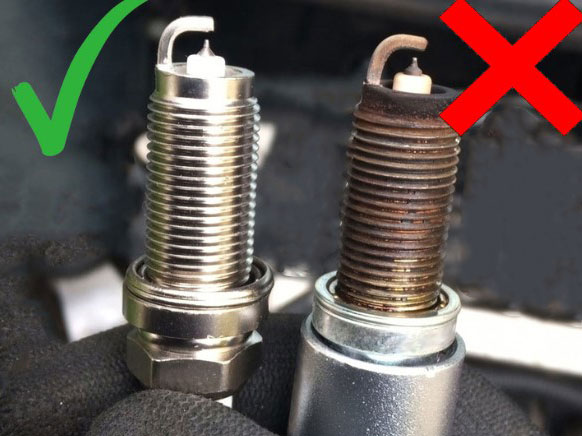
If its replacement is necessary, what are the steps to perform it correctly?
- Once located, the spark plug cap must be removed;
- Then it must be unscrewed with the appropriate jointed spanner. (To unscrew the spark plug, it is necessary to apply a fair amount of pressure, taking care not to exaggerate, however, to prevent the thread from breaking inside the machine, an operation that should preferably be done when the engine is hot).
- Once the spark plug has been unscrewed, it can be replaced;
- As a final step, the spark plug must be tightened again, following the instructions mentioned in the manual.
2.4. For maintenance freaks…
You are a maintenance freak and like to take care of your pressure washer down to the last tiny detail to the point of fanaticism? Then this chapter is for you…
In the following chart, we try to list all the various maintenance tasks, from a simple check-up to the actual replacement of a component, with the respective timing.
| With each use | After approx. 50 hours of work | After approx. 100 hours of work | ||
| Checking spark plug condition | ✔ | |||
| Changing engine oil | ✔ | |||
| Checking engine oil level | ✔ | |||
| Component integrity check | ✔ | |||
| Checking and cleaning the filters | ✔ | |||
| Checking and cleaning the nozzles | ✔ | |||
| Replacing pump oil | ✔ |
3. Storage
Finally, we reach the chapter concerning storage.
By storage, we do not only imply what can be done for the winter period, but also a long period of standstill of the machine.
Correct maintenance ensures that the machine is kept in the best possible state, allowing it to be in good condition after the period of inactivity.
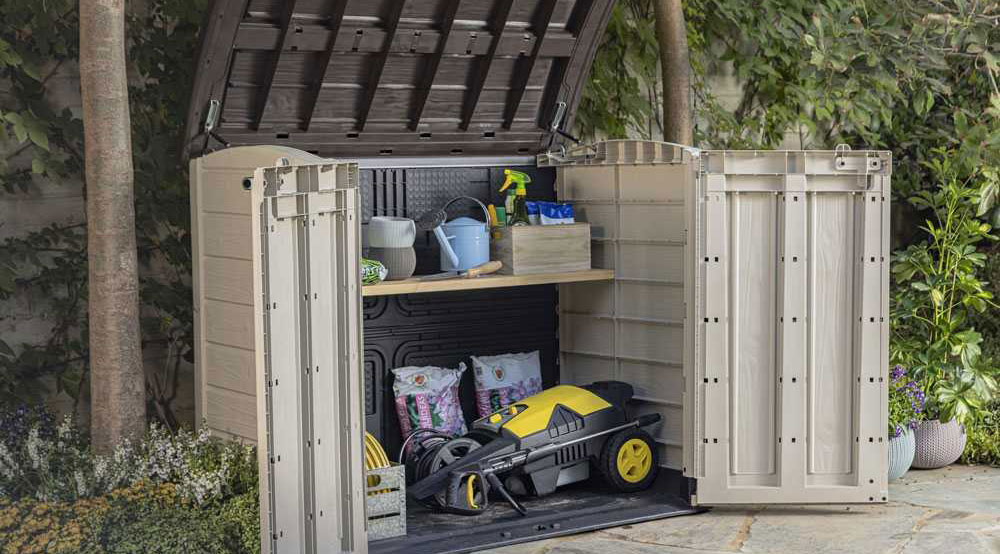
We can sum up storage operations in:
- Drain all water from the machine;
- Leave the pressure washer in a dry place away from frost;
3.1 Draining water from the machine
Before a long standstill, it is important to drain all the water in the pressure washer, such as gun, high-pressure hose, etc.
This step is very important for storage, especially if the machine is left unused during winter without adequate protection or outdoors.
The ideal storage involves leaving the machine indoors and protected from rain and cold, especially then during the winter, for example in a garage or cellar.
Leaving the machine in a cold place or even outdoors, in fact, with temperatures dropping below 0°, will cause the water to freeze, increase in volume and thus seriously risk damaging the pump or other machine components.
For this reason, the pressure washer should not be left exposed to low temperatures for too long, especially with water still inside it.
3.2 Storage
The last step is the actual storage of the machine.
The ideal solution is to leave the pressure washer in a closed, sheltered place (garage, cellar, garden shed, etc.) and cover it with a suitable protective cover to protect it from dust and low temperatures.
3.3 Storage (for petrol models)
Besides the operations listed above, there are additional tasks to be performed for petrol-driven pressure washers:
- Emptying the tank;
- Removing the spark plug.
3.3.1 Emptying the tank
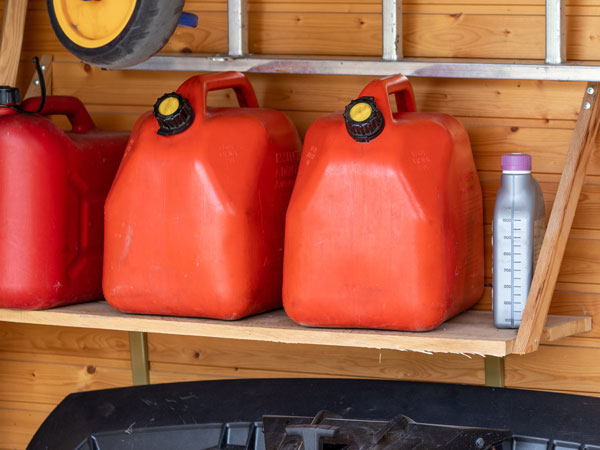
Before standstill, as with all petrol engine machines, it is important to empty the tank of residual fuel.
This is because the fuel, remaining standstill for a long time, will deposit sticky substances and waste residues that are dangerous to the engine.
For proper storage, special thick red plastic canisters are available to prevent light penetration.
If, on the other hand, fuel is to be left in the tank, special additives must be added regularly throughout the downtime.
3.3.2 Removing the spark plug
Another additional measure for petrol models before a long standstill is to remove the spark plug.
Tip: Once the spark plug has been removed, it is advisable to pour a teaspoon of oil into its housing, so that the cylinder is always well lubricated.
4. Limescale build-up
Limescale build-up is one of the most frequent causes of breakdowns and reduced performance of pressure washers, due to the use of water with a high mineral content, especially in the case of hot-water pressure washer models, as the water inside the boiler overheats, which can lead to the build-up of large amounts of limescale.
Since this is such a common occurrence for all pressure washers and since it does not have a sole cause, but rather a combination of several factors, it is not possible to state when is the most suitable time for its removal.
What are the most common signs of limescale build-up?
- Water jet volume and pressure reduction;
- Damage to internal components;
- Increased energy consumption of the pressure washer.
Regular maintenance and cleaning of the machine plays a very important role in preventing excessive limescale build-up and ensuring the best performance from your pressure washer at all times.
Besides this, there are also some small precautions to follow with each use, which can also help prevent this issue.
- Make sure to drain the pump and accessories completely after each use;
- If possible, avoid using water that contains large amounts of minerals in order to prevent limescale build-up at source;
- Clean the machine periodically;
- Finally, in the case of a hot-water model, carry out a final cold-water wash cycle so as not to switch off the machine with overheated water inside the coil.
Hot water and soap deposit in the coil: In the case of a hot water pressure washer, however, it is very important never to use hot water together with a chemical cleaner. Using these two elements can cause fouling of the pipes and coil, irreparably damaging the internal boiler.
5. What is needed for maintenance?
We have covered what maintenance work needs to be performed, but what does it take to carry out the maintenance work above?
The tools and items required are not many, most of which are then linked to the maintenance of petrol engines.
The items required are:
- Jointed spark plug spanner;
- Spare spark plug;
- Engine oil;
- Spare air filter;
- Protective tarpaulin.
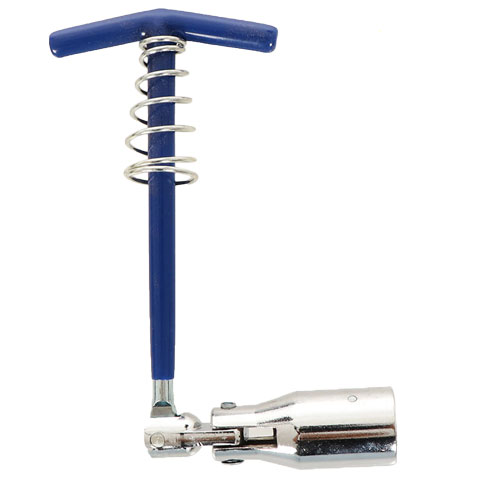




- Jointed spark plug spanner: Jointed spanner for screwing and unscrewing the spark plug.
It can be of different sizes and fittings according to the different types of spark plugs. - Spare spark plug;
- Engine oil: New engine oil, in case of topping up or changing;
- Spare air filter;
- Protective tarpaulin: Storage tarpaulin to cover the machine and protect it from dirt and moisture.
6. Frequently asked questions from our customers
The cause for a jerky pressure washer could be a water leak or leakage between the pump and the gun.
A low pressure jet could be due to excessive wear of the pump seals.
The water filter is located at the connection to the water inlet pipe.
The nozzle is the final part of the pressure washer, i.e. the part where the pressurised water flows out.
To drain the pressure washer, simply connect it to the mains and switch it on for 10–15 seconds, allowing the leftover water to drain from the hose connection.
The pressure washer must be connected to a water supply or a tap, then simply connect the gun to the hose and the hose to the pump.



